The Tire and Repair Stations of the Vanderbilt Cup Races
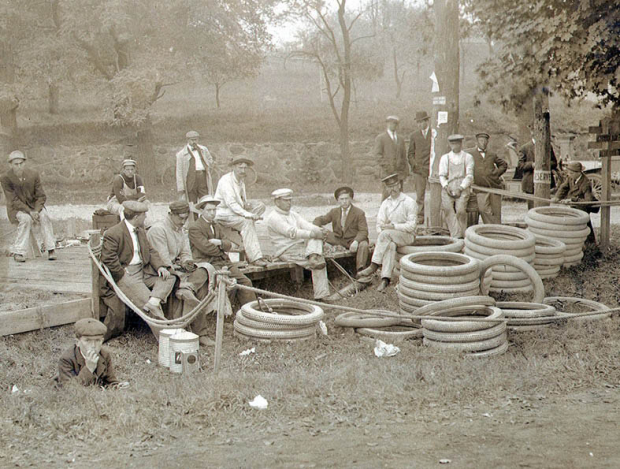
The winners of the Vanderbilt Cup Races of Long Island were typically not the fastest cars but the ones that were the most durable with the fewest tire problems. The car and tire manufacturers assisted the drivers by setting up repair and tire stations throughout the courses. These were the "pits" of modern day race lexicon, decidedly less structured than found in racing today.
For the most part, these stations were clustered around the turns, where the cars were more vulnerable to mechanical and tire failure.
Enjoy,
Howard Kroplick
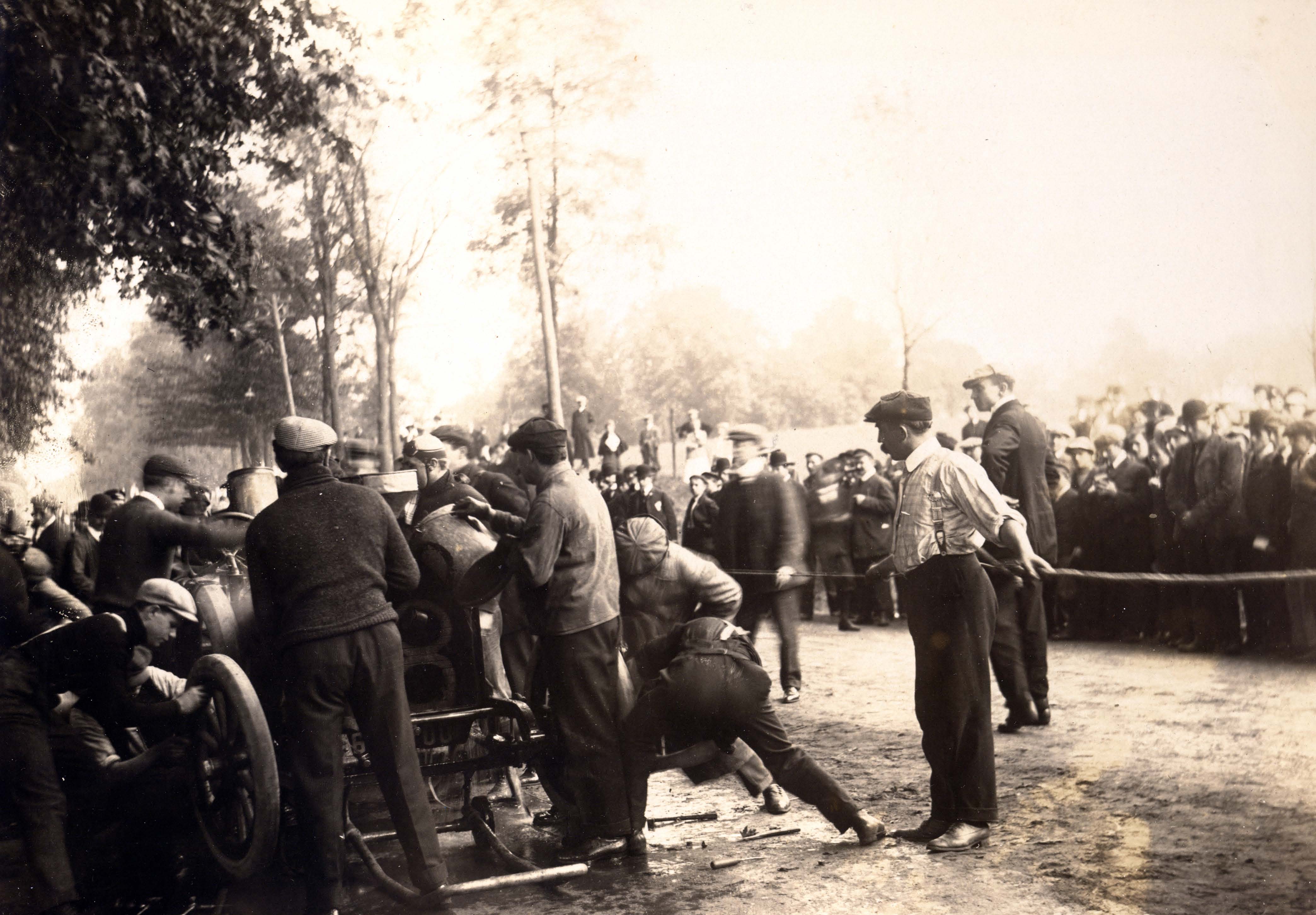
Originally, the race rules restricted the number of individuals permitted to work on cars, but by race time for the 1904 event, this had changed and teams were allowed to use as many workers as they thought necessary. The absence of restrictions continued for the 1905 and 1906 Vanderbilt Cup Races.
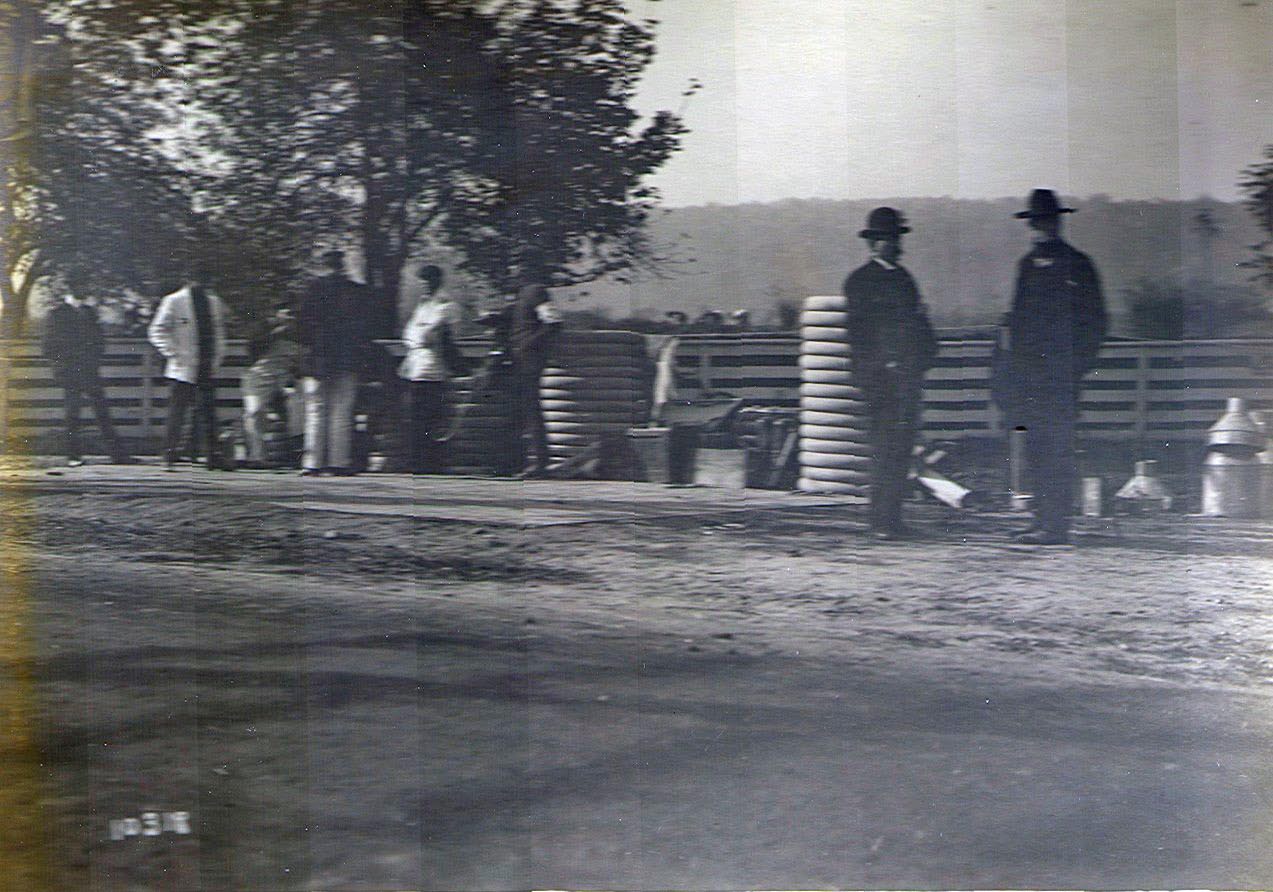
The rough terrain and the still emerging technology of pneumatic tires made their failure common place. According to the Vanderbilt Cup Race rules, the tires were required to be manufactured in the country that represented the car. The rules also forbid wheel changes, so with every failure the process of securing a new tire to the wood spoke rim consumed vast quantities of precious time.
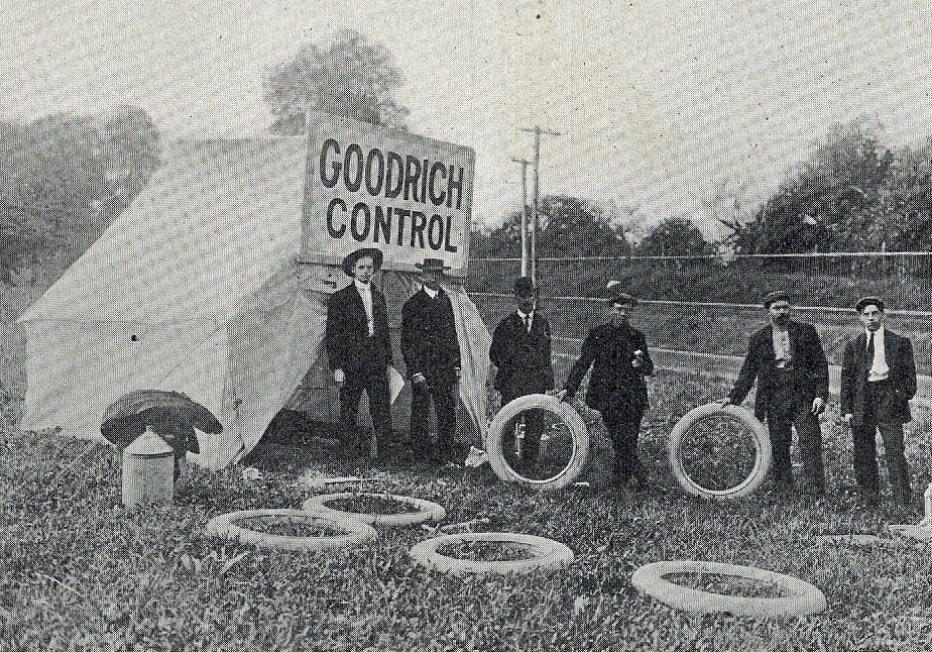
To meet this challenge, tire companies established service stations around the courses. Tire companies represented in the race were G&J, Diamond, Continental, Goodrich and Michelin. The adventure for all these crews extended well beyond the race. They lived at their stations, part of their duties to protect the supplies from theft or tampering.
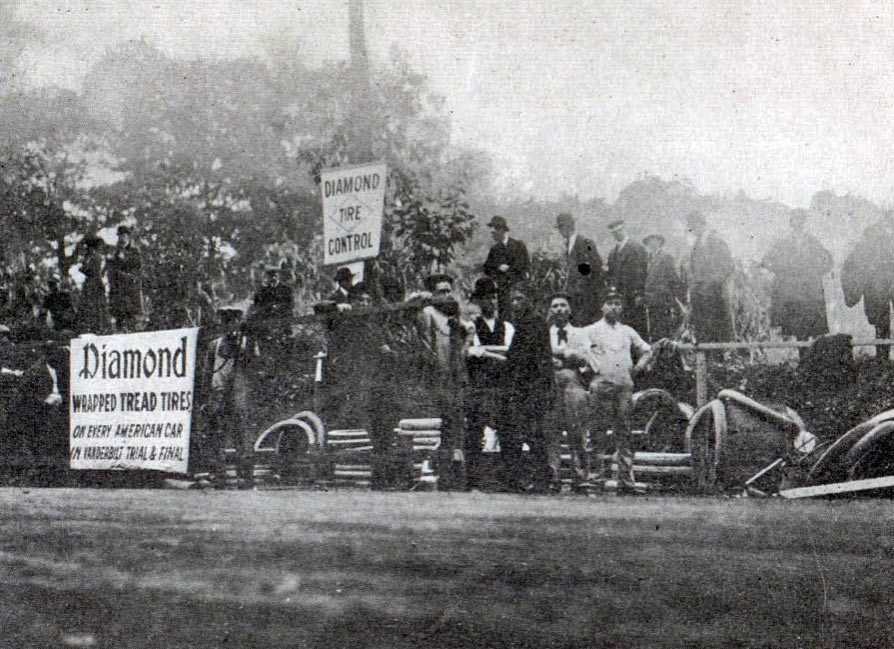
For the 1905 American Elimination Trial and the 1905 Vanderbilt Cup Race, all the American racers rode on Diamond tires.
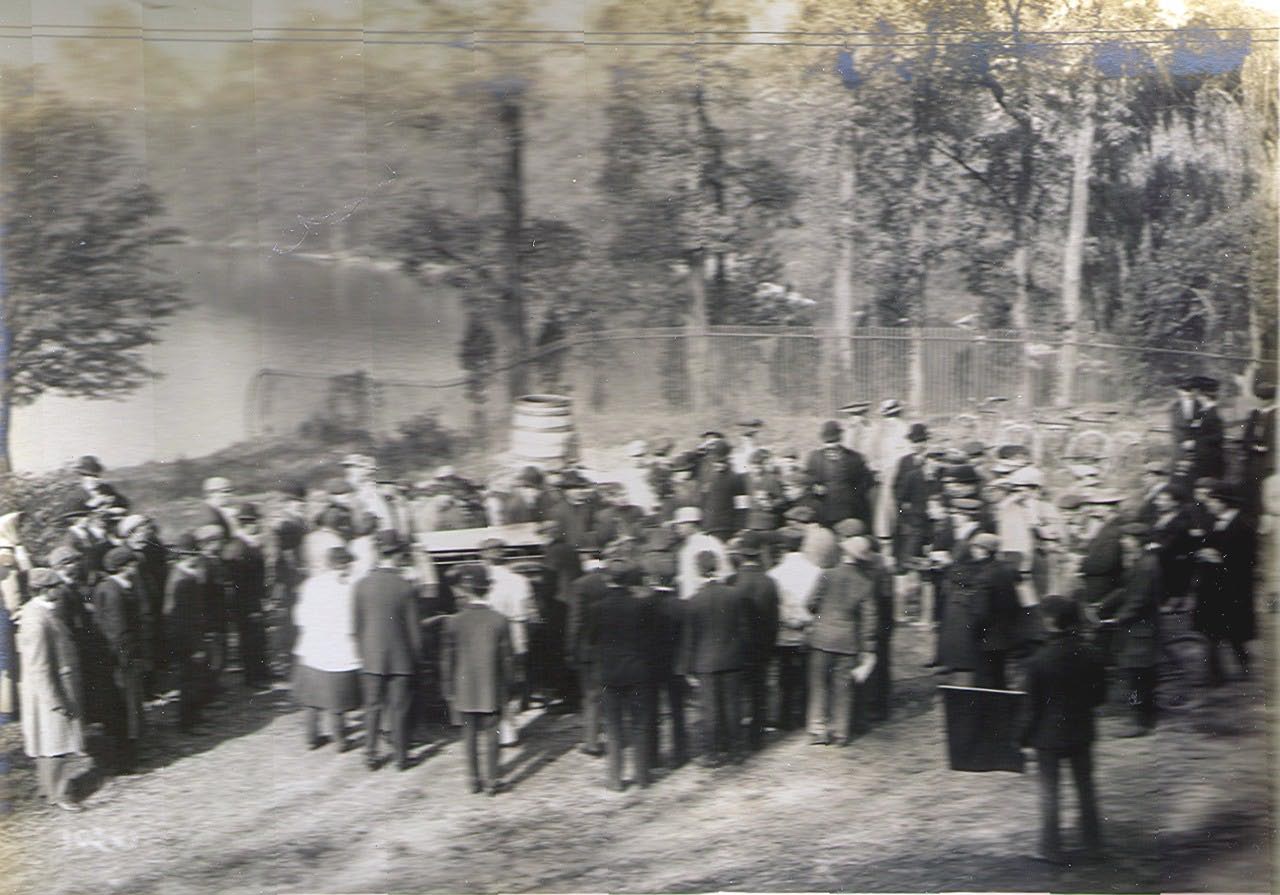
This Diamond Tire repair station was located on Lakeville Road in front of Lake Success. Here, the #7 Locomobile driven by Joe Tracy and Al Poole was being serviced.
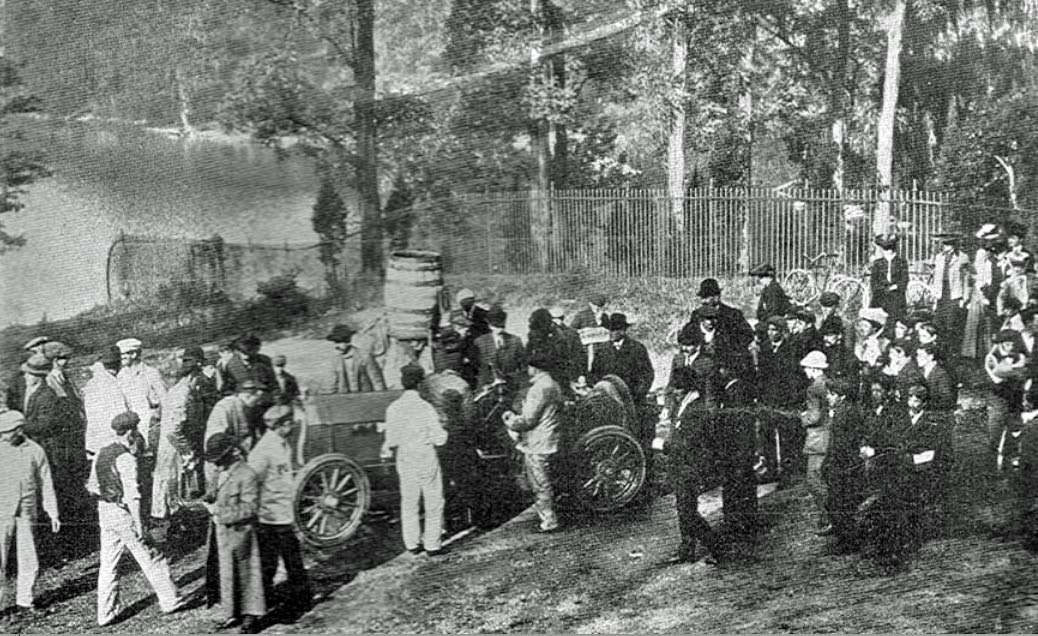
The iron fence in the background surrounded William K. Vanderbilt, Jr.'s Deepdale Estate.
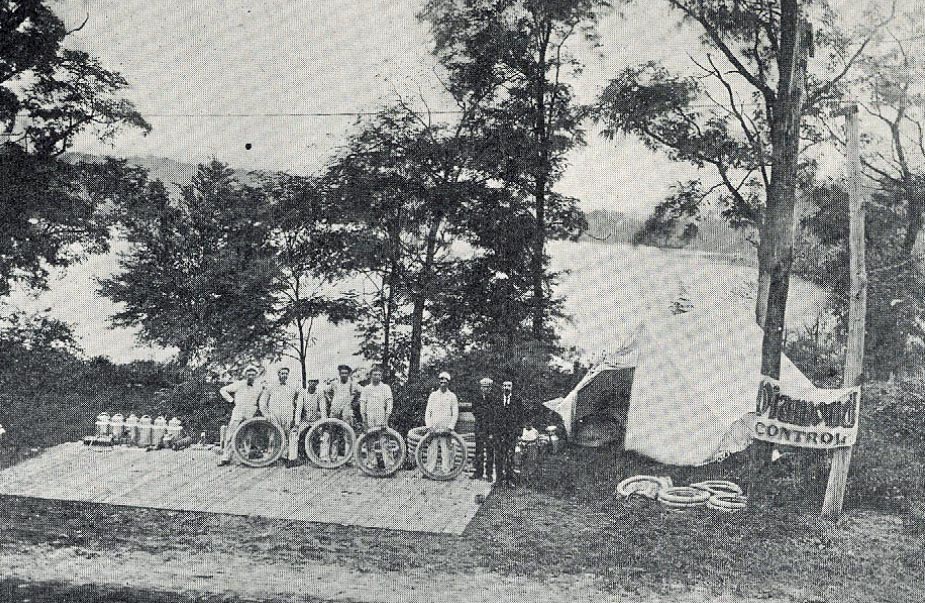
Among the preparations made by the tire companies was an ample supply of water and buckets. One of the precautions these companies took was to douse a car’s tires with water when it stopped. This made handling the hot rubber possible, and, they believed, prolonged its life.
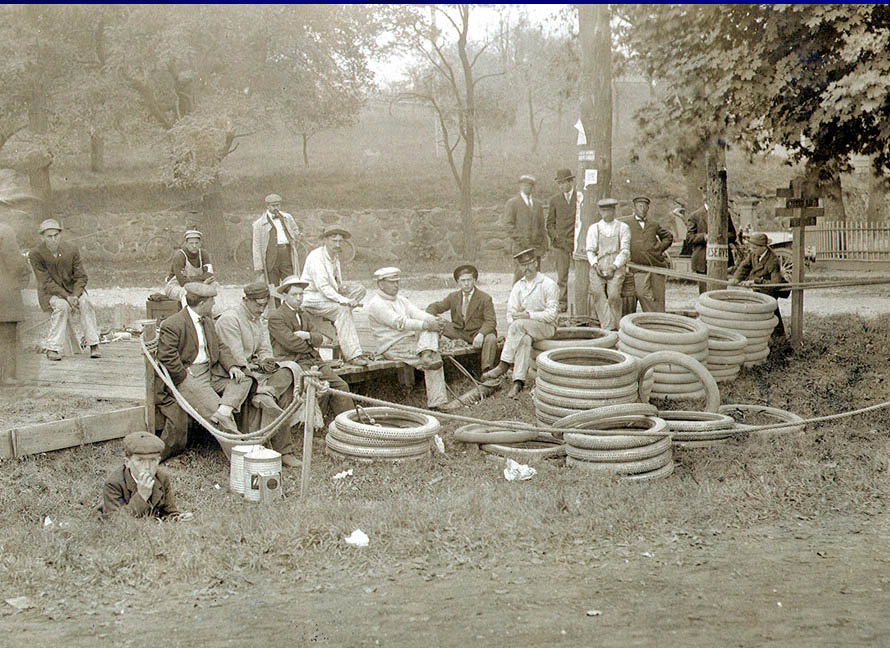
A wonderful image of a repair and repair station. As with most Vanderbilt Cup Race photos, every man and boy was wearing a cap, hat or derby.
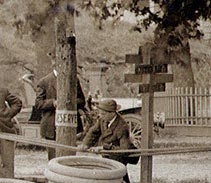
A close-up of the sign on the tree indicated Oyster Bay was three miles away. Accordingly, the best guess of its location was the East Norwich Turn at Jericho-Oyster Bay Road and North Hempstead Turnpike.
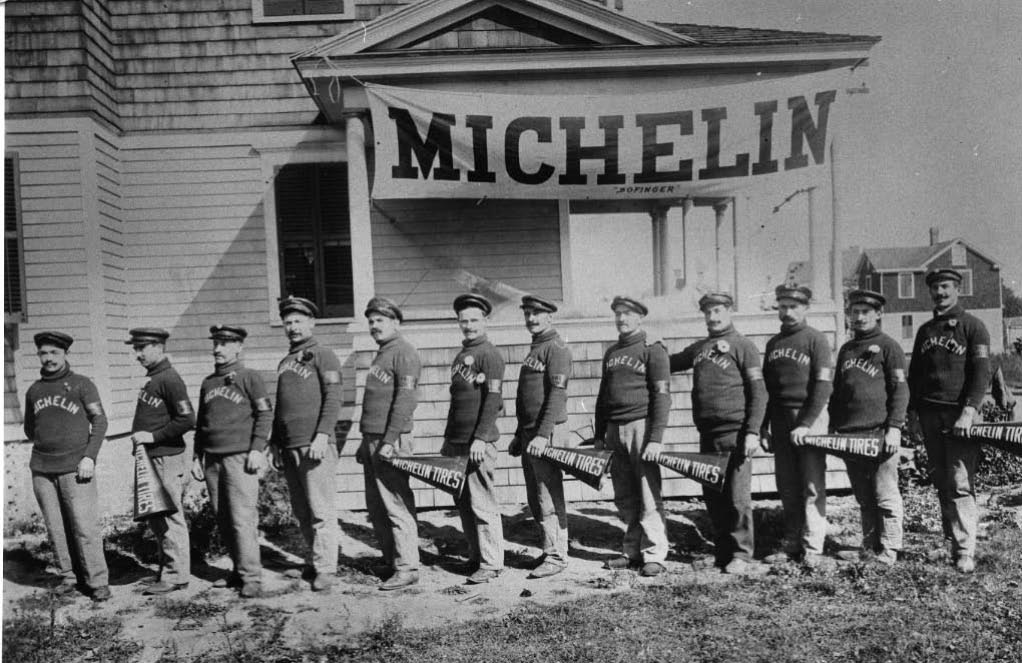
The Michelin "tiremen" at their Vanderbilt Cup Race headquarters. Michelin was the most popular choice as the entire Italian team was on them, as well as the De Dietrich, the Panhard and Renault. (Courtesy of the Suffolk County Vanderbilt Museum).

Comments
From Dan Scheidel:
When ever I drive down Old Country Rd., Garden City and pass Roosevelt Field I think back on the days of my youth and would see various gararges with nationality flags or banners of race car companies and companies involved in auto racing years back. I’ve done some reseach on your web site regarding the Vanderbilt Races and wonder if they, the garages, were part of those races. 1936 and 1937. I guess I was about seven or eight years old and my father had to work at Police Headquarters in Mineola at that time. I know this may be a strange request but are there any pictures of those garages?
Thanks for your patience.
Dan